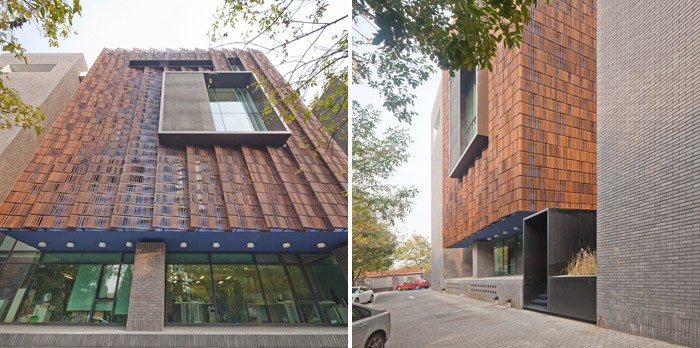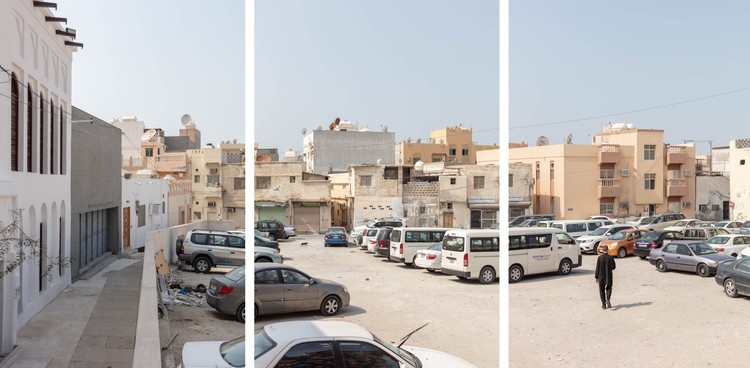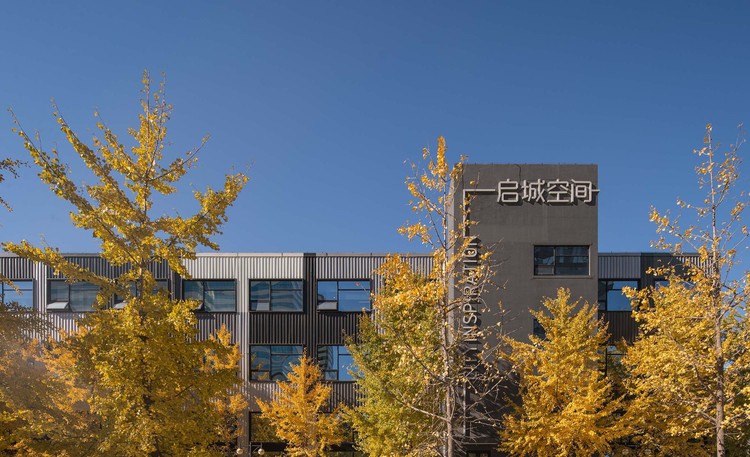Turkish Contractors Associaton HQ AVCI Architects
2014-05-09 01:00
Design Team Selçuk Avcı,BurakÜnder,Buşra Al,Markus Lehto,Begüm Tırpancı,TuğbaÖztürk,Tayfun Aksoy Project Management and Construction Supervision IMS Mühendislik Danışmanlık Sustainability Consultant Atelier Ten Interior Design Deniz Nar,Begüm Tırpancı(AVCI Architects)Landscape Design Arzu Nuhoğlu Peyzaj Tasarım Prime Contractor Mesa Mesken Sanayii Project Manager Ozan Turhan Static Project Ural Mühendislik Mechanical Project Atelier Ten,采购产品名称:İMühendislik电气项目Yurdakul Elektrik支护项目KSA Mühendislik基础设施项目Kadim Mühendislik消防安全项目Karina Tasarım声学项目mezzo tasarım Leed顾问Duygu Erten博士多规格少规格
Design Team Selçuk Avcı, Burak Ünder, Buşra Al, Markus Lehto, Begüm Tırpancı, Tuğba Öztürk, Tayfun Aksoy Project Management and Construction Supervision IMS Mühendislik Danışmanlık Sustainability Consultant Atelier Ten Interior Design Deniz Nar, Begüm Tırpancı (AVCI Architects) Landscape Design Arzu Nuhoğlu Peyzaj Tasarım Prime Contractor Mesa Mesken Sanayii Project Manager Ozan Turhan Static Project Ural Mühendislik Mechanical Project Atelier Ten, Okutan Mühendislik Electrical Project Yurdakul Elektrik Shoring Project İksa Mühendislik Infrastructure Projects Kadim Mühendislik Fire Safety Project Karina Tasarım Acoustic Project Mezzo Tasarım Leed Consultant Dr. Duygu Erten, Turkeco İnşaat Furniture Nurus Construction Betonarme Manufacturers Loading... More Specs Less Specs
© Yunus Özkazanç
(Yunus Zkazan)


架构师提供的文本描述。该项目是有限的设计竞赛的结果,其简要介绍使人们对领先的环境设计方法产生了极大的兴趣。因此,从一开始就设立的项目小组是一个多学科小组,包括国际和地方小组,其中包括来自伦敦的Atelier TEN担任环境工程师。建成后的建筑已经被视为前沿环境设计的展示,这不仅提高了安卡拉的设计师和客户的标准,也提高了整个土耳其的标准。事实上,即使在伦敦或纽约的街道上,这样的建筑也不会显得不合适。
Text description provided by the architects. The project was the result of a limited design competition with a brief that placed a great interest in leading environmental design approaches. Thus the project team set up from the onset was a multidisciplinary group, both international and local which included Atelier Ten from London as environmental engineers. The completed building is already regarded as a showcase of leading edge environmental design, which has raised the bar not only for designers and clients alike in Ankara but the whole of Turkey. Indeed such a building would not find itself out of place even on the streets of London or New York.
© Yunus Özkazanç
(Yunus Zkazan)


这份简报在许多方面都是总部大楼的典型代表,该大楼基本上是一个承包商协会,他们代表土耳其建筑业的代表机构(crème de la crème)。这些承包商中有33家是土耳其最大的承包商中的33家,他们在世界上仅次于中国排在第二位。美国占据第三位。因此,那里的建筑被设计成土耳其承包能力的展示,并作为该行业的一个例子举行。因此,将自己确立为土耳其对环境最负责任的机构的议程使土耳其承包商协会在这一市场上成为一个独特的主张。这些职能除行政和指导办公室外,还包括一系列公众因素,如一个会议厅和展览区,以及一个供前往技合机构参观的人使用的资源库。
The brief in many ways is typical of an HQ building, which houses essentially an association of contractors, who represent the crème de la crème of the construction industry in Turkey. These same contractors institute 33 of the largest main contractors of Turkey who are placed 2nd only after China in the world. USA holds the third position. The building there fore is designed as a showcase of Turkish Contracting capabilities and is held as an example of what the industry is about. There fore the agenda to also establish itself as the most environmentally responsible institution in Turkey makes the Turkish Contractor’s Association a unique proposition in this market place. The functions include, apart from offices for administration and guidance, a series of public elements such as a conference hall, and exhibition areas as well as a resource library for visitors to the TCA.
© Yunus Özkazanç
(Yunus Zkazan)


建筑本身表达了这些功能,并组织起来尽可能透明地向外部世界反映这一点。当你从地面上往上移动时,节目中要求的隐私程度不断提高,这些元素被置于一个自然的等级结构中,把最私人的休息室放在顶层,在最底层放置最公开的展览和会议空间。从另一方面,中庭在进入时就显示出所有这些功能,将建筑物与街道连接到公共领域,并上升到整个空间的顶部,它也是所有开放公共空间的自然通风装置。TCA的制度透明度的基本原则,无论是概念上的还是结构上的,从一开始就确定了这种设计。
The building articulates itself to reveal these functions, and is organised to reflect this as transparently as possible to the outside world. As you move up the building from ground up the increasing degrees of privacy required in the programme positions these elements in a natural hierarchy, placing at the top the most private lounge, and at the bottom the most public exhibition and conference spaces. The atrium cutting through the mass reveals on the other hand all of these functions upon entry, while connecting the building to the street level to the public domain and rising to the top of the whole it also acts as a natural ventilation device for all of the open public spaces. TCA's basic principle of institutional transparency both conceptual and structural defines the design from the beginning.
Floor Plan -3
平面图-3


利用地下冷却迷宫系统对安卡拉当地气候的昼夜温差进行了研究,结果表明,夏季安卡拉地区气温昼夜相差15~20度。通过使用热质量,该系统优化了建筑物的环境性能,以保持居住者的舒适性,以响应变化的外部温度,同时减少能源需求。
An underground cooling labyrinth system is employed to exploit the diurnal temperature range of the local climate of Ankara, which in summer indicates a difference of 15-20 degrees between night and day. By using thermal mass this system optimises the building’s environmental performance to maintain occupant’s comfort in response to changing external temperatures while reducing energy demand.
© Yunus Özkazanç
(Yunus Zkazan)


在夜间,来自外部的冷空气通过迷宫通道,在整个迷宫细胞系统中实现快速冷却。这有效地使‘冷却’进入储存为第二天,因为这种自然冷却的空气是分布的。在冬季,来自土壤的热量被用来被动地加热白天的空气.直径150毫米的镀锌钢管铺设在混凝土板的大体积内,以便将空气输送给置于暴露的混凝土天花板下的冷却梁。建筑物表面的结构质量是用来利用它们的热质量来吸收这些管道的“冷却”的,因为这些管道是通过冷却梁循环而来的。这些单位被放置在一个最佳的配置在办公室和空间,也是双倍作为光源的照明以及下降。
At night-time, the cooler air from outside is passed through the labyrinth passageways to achieve rapid cooling across the whole labyrinth cell system. This effectively puts ‘coolth’ into storage for the following day as this naturally cooled air is distributed. In the winter-time, the heat from the soil is used to passively heat the daytime air. Galvanized steel pipes of 150mm diameter are laid within the mass of the concrete slabs to deliver air to chilled beams placed under exposed concrete ceilings. The structural mass of the building surfaces is there fore utilised to take advantage of their thermal-mass absorbing the “coolth” from these pipes as the circulate through to the chilled beams. These units are placed in an optimal configuration within offices and spaces, and also double up as light sources both lighting up as well as down.
© Yunus Özkazanç
(Yunus Zkazan)


外皮由两层组成,第一层是经典的无框玻璃到玻璃或玻璃到金属面板系统。第二层是不锈钢网格遮阳层。这个屏幕系统的微妙之处使用者能够保持与外部视图的联系,同时对网格的响应密度随太阳方向的变化而变化,从而暴露在阳光下。白天,屏幕使功能团得以表达,而在夜间,内部照明的建筑展现了整体,瞬间成为一种现代蜡烛,在夜间优雅地发光。这种透明度在邀请你的同时,允许一个人与外界保持牢固的关系,把你关在里面,同时加强与公共领域的这种关系。
The external skin is made of two layers; the first a classic frameless glass to glass or glass to metal facade panel system. The second is a layer of stainless steel mesh shading. The delicacy of this screen system allows occupants to remain in touch with outside views while giving a responsive density to the mesh varying according to solar orientation and therefore exposure to sunlight. During day-time the screen enables the functional masses to be articulated, while at night the internally lit building reveals the whole, becoming in an instant a kind of modern candle that glows gracefully at night. This transparency while inviting you in, allows one to retain a strong relationship with the outside world holding you within while reinforcing this relationship with the public domain.
© Yunus Özkazanç
(Yunus Zkazan)


在内部和外部,重点是使用天然材料,如木材和石头,这与相对坚硬的表面暴露的混凝土表面。照明是内部最关键的方面,因为它是用来突出这些表面直接和间接。当然,所使用的所有材料都是当地资源,并被选择以尽量减少对环境的影响。
Internally and externally an emphasis is placed on the use of natural materials, such as timber and stone, which contrast with the relatively hard surfaces of the exposed concrete surfaces. Lighting is the most critical aspect of the interiors as it is used to highlight these surfaces both directly and indirectly. Naturally all of the materials that are used are resourced locally, and chosen to minimize environmental impact.
West Elevation
西向立面图


大理石从外面的城市卡斯塔莫努是使用在北和西北的建筑正面作为一个外部雨幕覆层系统。石板之间的接缝是用镀锌钢固定系统悬挂在混凝土结构上的,它们之间的接缝是开放的,以便雨水从门面排水而出。这个开放的细节允许我们创造一个非常精确和清晰的细节之间的石板。这块石头被赋予了粗糙的光洁度,它暴露了表层背后的化石结构,给人一种表面处理的有机感觉,与玻璃、金属和不锈钢元素精细化的表面处理形成鲜明对比。
Marble from the outside the city of Kastamonu is used on the North and North-West facades of the building as an external rain screen cladding system. The joints between the stone panels, which are hung from the concrete structure with a galvanized steel fixing system, are left open to allow rain to drain through the façade and out. This open detailing allows us to create a highly precise and crisp detail between the stone panels. The stone is given a rough finish which exposes the fossil structures behind the surface layers and gives an organic feel to the façade treatment which contrasts with the refined and precise finishes of the glass, metal and stainless steel elements.
© Yunus Özkazanç
(Yunus Zkazan)


在所有地面表面外,使用了一个较暗的玄武岩石头从凯斯里。再一次,玄武岩是完成了一个帕蒂纳完成,使石头一个自然的外观。黑石的选择使得建筑物的其余部分悬停在地面之上,因为它给了整个建筑一个自然的基础。地板饰面的石头被抬上楼梯,也进入靠近入口处的反射池。
On all ground surfaces externally a darker basalt stone from Kayseri are used. Again the basalt is finished with a patina finish to give the stone a natural look. The selection of the dark stone makes the rest of the building hover above the ground as it gives the whole a natural base. The stone of the floor finishes are taken up the stairs and also in to the reflecting pool adjacent to the entrance.
© Yunus Özkazanç
(Yunus Zkazan)


在内部,这些材料被选择与钢结构的使用进行对比,钢结构被涂成黑色无烟煤金属灰色,而墙壁表面是用胡桃木木板、玻璃和白色隔音板完成的。石材表面的使用继续延伸到地面的公共区域,以阿夫扬磨光的石头的形式出现在大面板上,给人一种从一块大石头上雕刻出来的感觉。这个元素继续在中庭的主楼梯上。
Internally the materials are chosen to contrast with the use of steel structures, which are painted a dark anthracite metallic gray, while walls surfaces are finished in walnut veneered panels, glass and white acoustic paneling. The use of stone surfaces continues in to the ground level public areas, in the form of a polished stone from Afyon, in large panels to give the sense of having been carved out of a large piece of stone. This element continues up the main stairs in the atrium.
© Yunus Özkazanç
(Yunus Zkazan)


太阳能电池板、太阳能电池、自行车架、回收站、灰水和雨水回收是建筑物的其他一些环境敏感特性。
Solar panels, solar cells, bicycle racks, recycling stations, and grey water and rain-water recycling are some of the other environmentally sensitive characteristics of the building.
Longitudinal Section 1
纵向第1节


LEED白金证书候选项目是一项综合设计工作,以基于设计/开发方法和鼓励使用当地资源和材料为基础的实验和研究协调到最后一个细节,从而促进土耳其最强大和最传统的工业之一。
The LEED Platinum Certificate candidate project is an integrated design effort, coordinated down to the last detail with experimentation and study based on design / development methods and encouraging the use of local resources and materials and thus contributes to one of Turkey’s strongest and most traditional industries.
























































































Architects AVCI Architects
Location Ankara/Ankara Province, Turkey
Category Office Buildings
Area 7138.0 m2
Project Year 2013
Photographs Yunus Özkazanç
Manufacturers Loading...
























